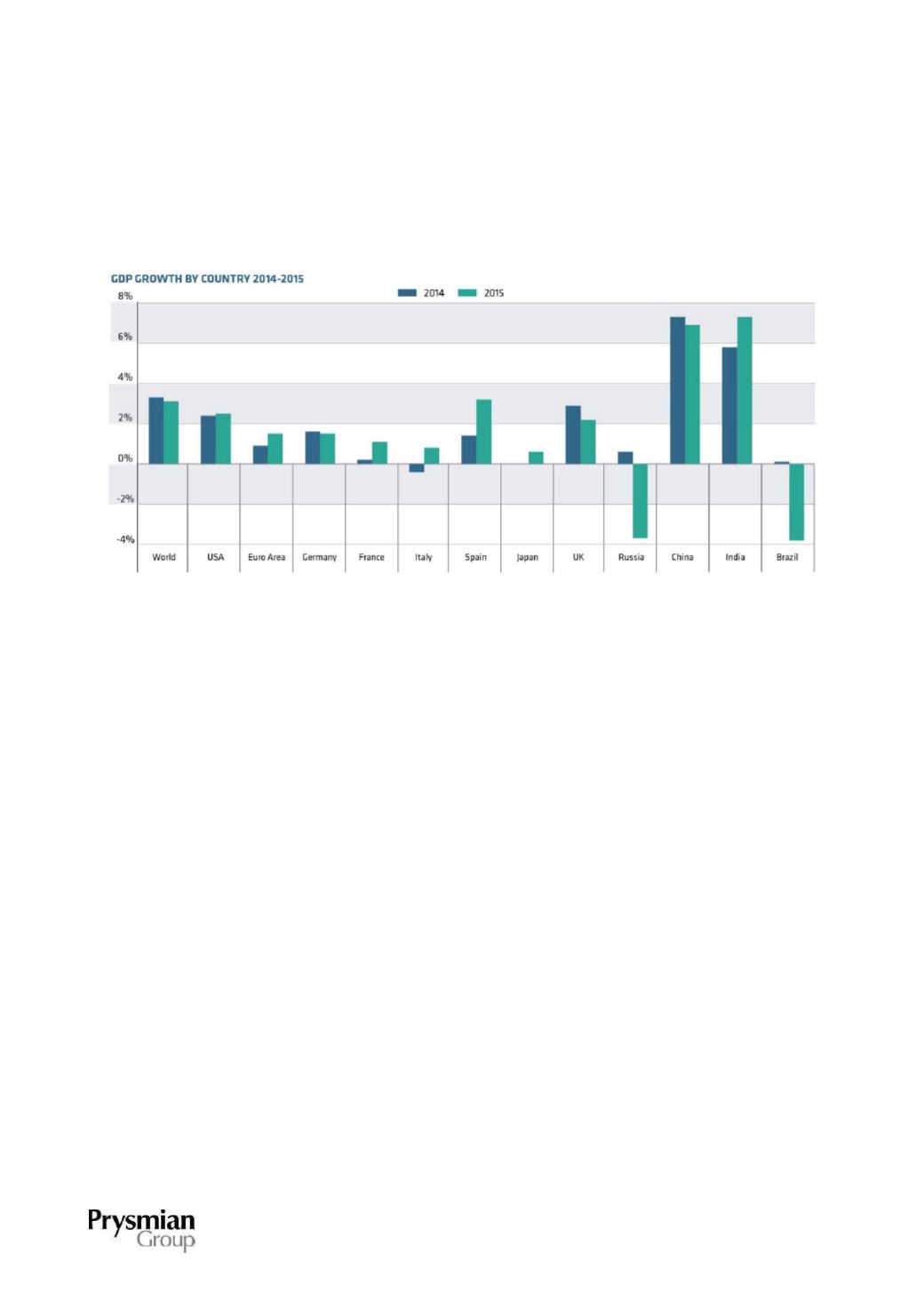

PRYSMIAN GROUP | DIRECTORS’ REPORT
52
Western Europe saw a gradual improvement in economic activity, albeit with specific idiosyncrasies in the
different countries. Eurozone GDP grew by +1.5%* on 2014, compared with +0.9%* in the previous year,
driven by the recovery of Mediterranean economies like Italy, which improved from -0.4%* in 2014 to +0.8%
in 2015, and Spain, which progressed to +3.2%* in 2015 from +1.4%* the year before.
* Source: IMF, World Economic Outlook Update – January 2016
CABLE INDUSTRY TRENDS
Global cable demand reported moderate growth in 2015, with some sectors such as optical cables and
submarine interconnections showing a marked acceleration compared with 2014.
Global demand for power cables posted a moderate increase in sales volumes in 2015, mainly thanks to
growing demand in emerging countries (mainly China and India) and, to a lesser extent, in the United States
and Western Europe. The Telecom cables industry reported a slight contraction on 2014 mainly due to the
fall in demand for copper cabling, primarily attributable to their replacement with optical cables. In fact, the
latter grew rapidly during 2015, almost entirely making up for the decline in copper cables.
Geographically, there was a sharp acceleration in the Indian and ASEAN markets, while China was once
again confirmed as the world's largest cable market, generating more than 50% of global growth. In fact,
these regions saw continued investment to expand and upgrade infrastructure and buildings in response to
growing demand by industrial operators and local communities. Important signs of recovery were also seen
in the main West European nations, particularly in the Nordic countries and the Mediterranean, thanks to
monetary easing by the ECB which fostered access to credit, in turn promoting a recovery in the construction
industry.
Demand in the United States expanded albeit to a lesser extent than in 2014, like in the Middle East and
Africa. Russia and Brazil were the two markets experiencing the largest downturns in 2015, caused by the
EU and US trade sanctions in Russia's case and by the economic slump in Brazil's .

















